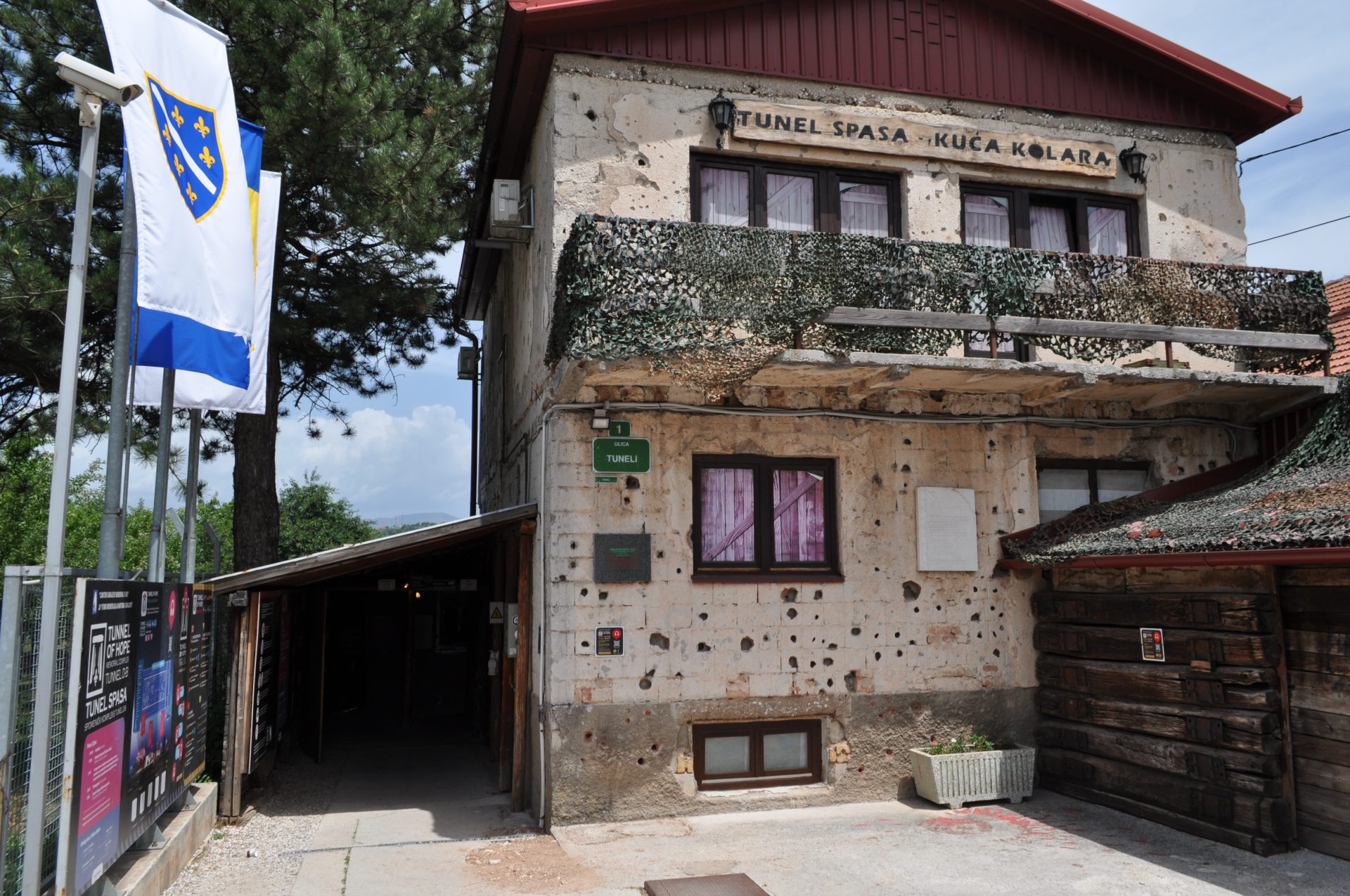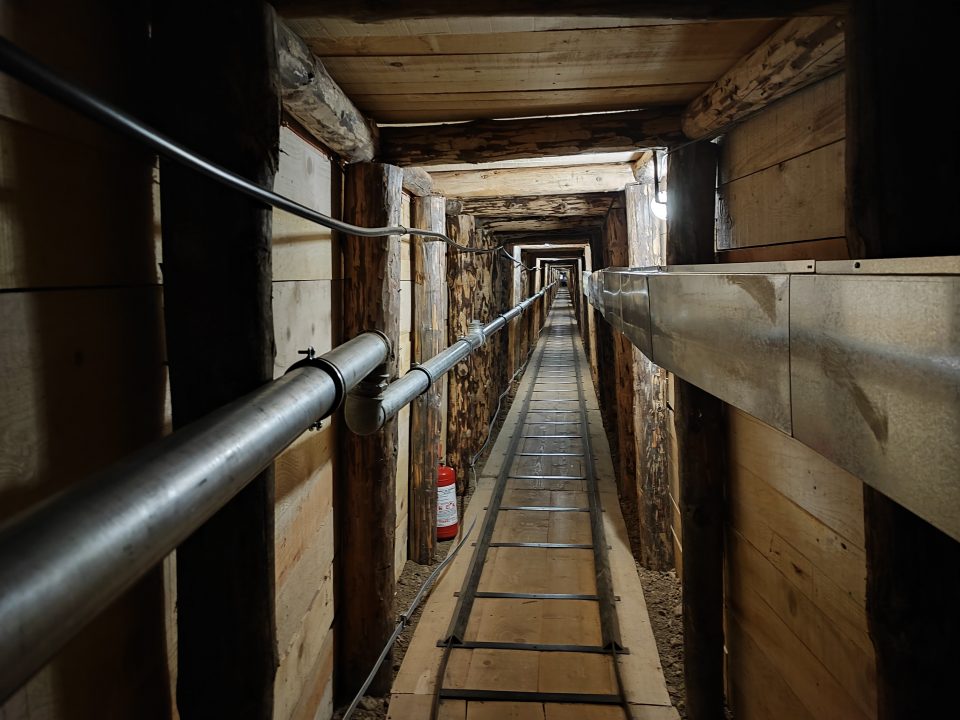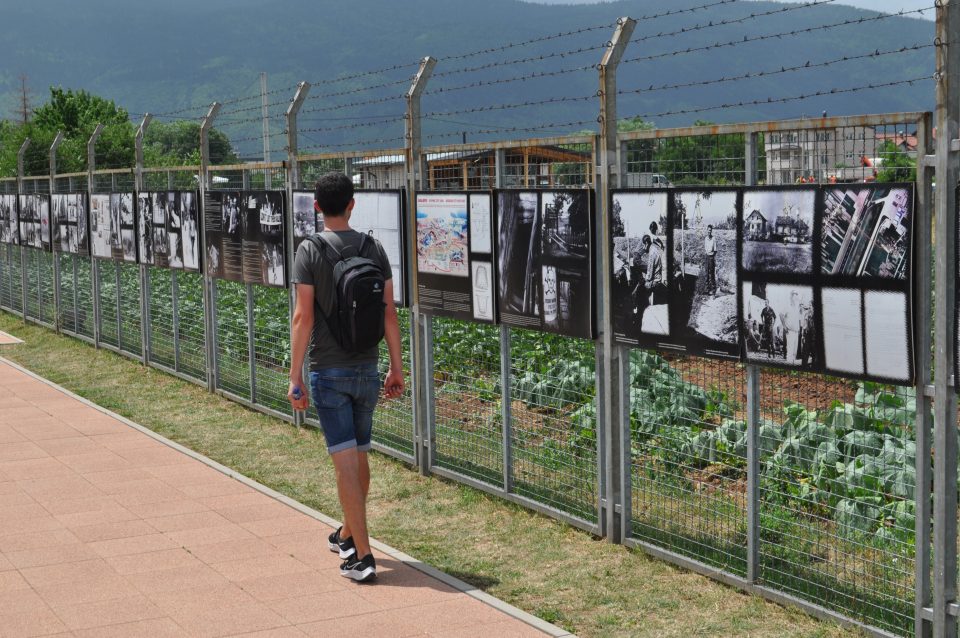
The siege of Sarajevo (1992-1996) was the longest siege of a capital city in modern history. The daily campaigns of shelling and sniping, targeting the civilian population, were terrible and cruel, compounded by the blockade of humanitarian aid convoys and the severance of any connection with the rest of Bosnia and Herzegovina and the world.
In an effort to survive and communicate with the outside world, Sarajevo residents dug a tunnel in the yard of the Kolar family. Stretching from the settlement of Dobrinja to that of Butmir, it was thus known as the D-B Tunnel, or alternately, the Tunnel of Hope.
The Tunnel of Hope was under the control of the Army of the Republic of Bosnia and Herzegovina (ARBiH) and used to distribute food, cigarettes, and weapons for defense. The tunnel’s construction began in April of 1993. According to curator Edis Kolar, the son of Bajro Kolar, they were aware beforehand that a tunnel would be built in their yard, but it was not publicly discussed.

Even though they were fighting on the frontlines, both Edis Kolar and his father went regularly to check on their house. Edis recalls that on one occasion, there were some people in front of the house, including engineer Nedžad Branković, the chief designer of the tunnel, some architects from Zenica, and Bakir Izetbegović.
“I remember what Bakir said very well: ‘We need a house and land for something.’ We knew that a tunnel was being built, but it was a well-kept secret. My dad knew what he needed, so he just said, ‘Everything that’s mine is yours too,’” Edis recalls. He goes on to explain that his father worked on the team that dug the tunnel and helped with the procurement of equipment.
Two months after that visit, Edis said that people started digging by hand, taking turns. There was less shelling, however, when the Army of Republika Srpska (VRS) found out about the digging of the tunnel, they launched two terrible attacks on March 17th and 18th. “They demolished everything. But they still didn’t succeed,” said Edis.
He says the tunnel was of enormous importance for the citizens of Sarajevo, and if it hadn’t been built, one could only guess what would have happened. He also emphasized that the tunnel was not built for escaping Sarajevo.
A Museum as a Testament
After they built the trenches and communication lines, Edis explains that the tunnel became a testament to the daily life of Sarajevo citizens, in which some married.
One of them was Edis’ friend, Elvir Spahić, who was 18 years old at the time and had been with Edis on the battlefield in the area of Treskavica. “He [Spahić] had a girlfriend from Hrasnica and we teased him about her. But one morning, Spahić said he was getting married. We laughed, but we took rifles and fired a few shots into the air, and they went through the tunnel to Sarajevo,” Edis recalled.
According to Edis, the tunnel was not used during the last month of the war since it had filled up with water. Edis and his father went home to clean it and found abandoned things, carts, and pictures. “We picked it all up and arranged it in the basement, which was empty, and that’s how the museum was created,” said Edis.

Inspired by the idea of preserving what was left behind, Edis searched for artifacts to buy from that period all over Bosnia and Herzegovina. Even today, artifacts can be donated to the museum if citizens believe they relate to the tunnel during the siege of Sarajevo. Edis states that even though many humanitarian organizations came to help with the rebuilding of their house after the war, his father did not want it to be rebuilt. He wanted the house to be preserved exactly as it was.
Accessible Museum Content
The museum was run by Bajro and Edis Kolar until 2012, when the Sarajevo Canton Memorial Fund took over. This year, they completed the reconstruction of the 130-meter tunnel, which had to be rebuilt from the ground up. Part of the airport runway was reconstructed in 1998, and the entire length of the pipe was filled with concrete.
“Three or four years ago, we decided to block that pipe and not go underneath the airport, but only as far as we can while staying on our land. So, boards and rails were inserted through that concrete pipe,” said Edis, explaining that the conceptual project was created by architect Selina Tanović, and an international application has been posted to support its completion.

The tunnel and museum are visited by roughly 170,000 visitors each year. The content has been adapted in order to make it accessible to the blind and visually impaired, as well as to those with developmental disabilities. “Every year we organize workshops for blind and visually impaired children, together with an educator and our curator. They helped us print the guide in Braille,” said Edis.
Visitors come to see the tunnel and museum from Bosnia and Herzegovina, the region, and across the world.






